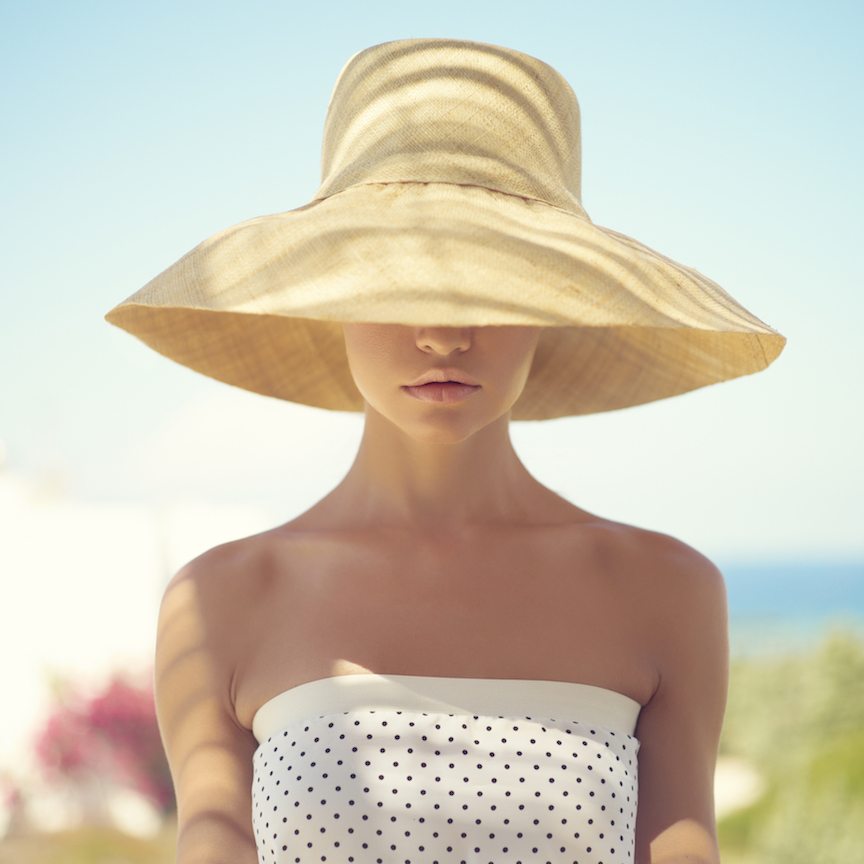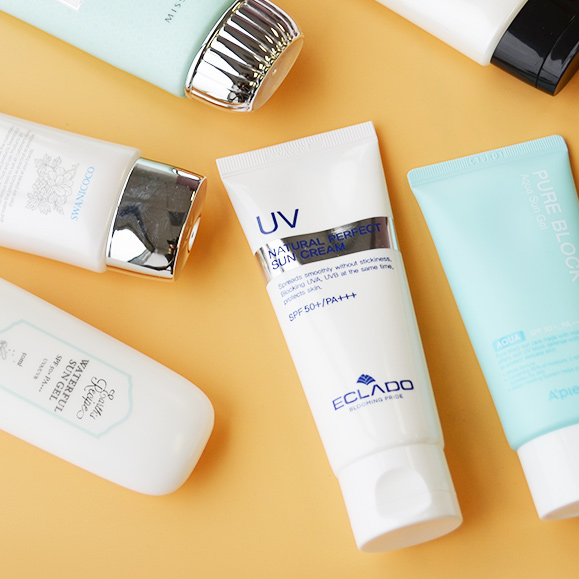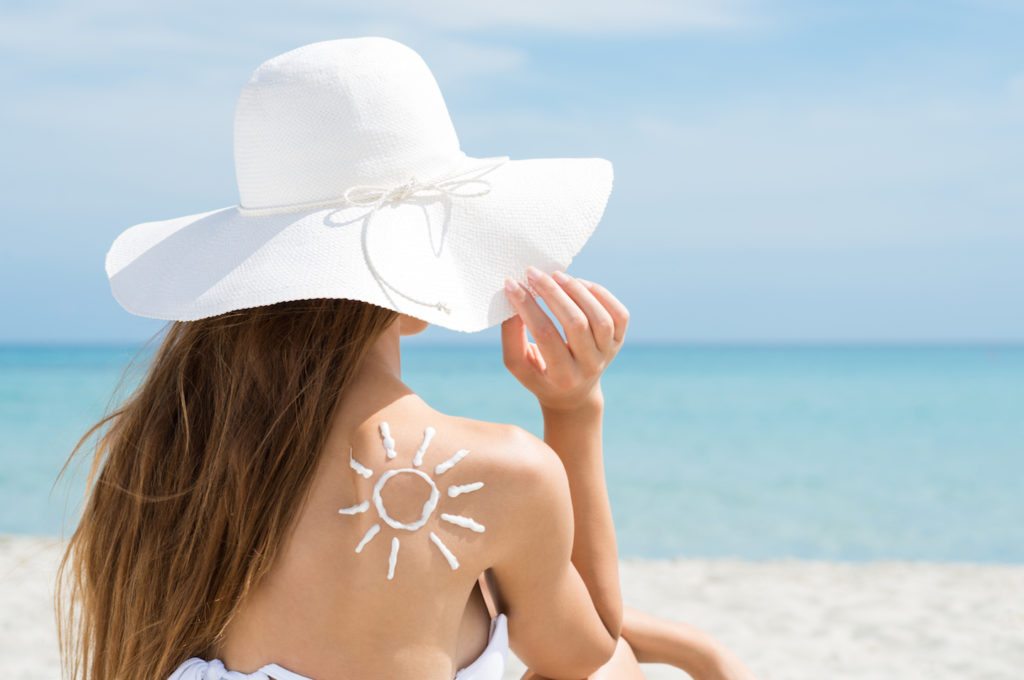Think you’re diligent about wearing sunscreen every day? All your best efforts may be for naught if you’re not following these basic rules of sun protection. Find out why you may still be photoaging under that thick, white sunscreen.
If there’s one thing I’m passionate about in skincare, it’s sun protection. It is the single most important thing we can do in terms of preventing premature aging, skin disease, and skin cancers. Really, it should be your highest priority on the skincare hierarchy scale.
But even if you have prioritized skin protection and have all the best intentions, you may not be doing everything correctly. Here are three important things you can check to ensure you’re doing all that you can to prevent photoaging. These three small things can make huge differences in not just how your skin looks but your health.
1. You’re not protecting against UVA rays
Many years ago, it was wrongly (very wrongly) thought that only UVB rays were of concern and worth protecting yourself from. UVB is the cause of the most instant and therefore easily identifiable consequence of sun exposure: sunburns. And as we began to understand more and more about the correlation between UVB and cancer, sunscreens gained popularity and provided protection against those UVB rays. It’s only somewhat recently that the importance of protecting yourself against UVA rays as well as UVB rays was understood.

UVA penetrates the skin more deeply than UVB rays, and, according to skincancer.org, that’s where the real damage takes place: “UVA has long been known to play a major part in skin aging and wrinkling (photoaging), but until recently scientists believed it did not cause significant damage in areas of the epidermis (outermost skin layer) where most skin cancers occur. Studies over the past two decades, however, show that UVA damages skin cells called keratinocytes in the basal layer of the epidermis, where most skin cancers occur. (Basal and squamous cells are types of keratinocytes.) UVA contributes to and may even initiate the development of skin cancers.”
So while North American sunscreens have SPF ratings (sun protection factor) that tell you its level of strength against UVB rays, it does not use the PA rating, which indicates UVA protection. So even if your sunscreen is labeled as “broad spectrum” protection, it still may not be offering up the UVA protection you need. Thanks to the PA rating used by Korean and Japanese sunscreens, you can be assured you’re covered.
So just like SPF, there are different levels to PA protection. PA+ means the sunscreen can provide UVA protection with a factor of Persistent Pigment Darkening (PPD) between two to four. It can provide the protection of medium UV radiation.

Sunscreen labeled with PA++ can provide moderate protection against UVA rays with a factor of PPD between four and eight. It is ideal for a normal skin individual exposed to medium UV radiation.
PA+++ is designed for normal skin that’s exposed to very strong UV radiation. It provides good UVA protection with a factor of PPD of more than 8.
I always recommend a rating of at least PA+++ and SPF 50; for me, there’s just no reason to use anything less. Using Korean or Japanese sunscreens is a very safe way to know exactly what kind of protection you’re getting so you can plan accordingly.
2. You’re not applying enough sunscreen
I have heard all kinds of different measurements of the “correct” amount of sunscreen one must apply. I’m not even going to get into the horror story of people who think that they’re covered just because their foundation has an SPF. (You’re not — you’re sooo not!). A dedicated sunscreen is the only way to go for protection.

How much I’ve seen people use varies wildly. There’s the nickel-sized dollop for the face, shot glass amount for the exposed parts of the body, two tablespoons, and even “two finger lengths worth” standard. For me personally, I take my cue from Kerry of Skin & Tonics. During a visit one day, we were getting ready at my bathroom mirror. Kerry and I are the same age but she looks a full decade younger than me; her skin is ageless! I had to ask her exactly how much sunscreen she uses to keep up that fantastic visage. She said “a fat cherry’s worth for the face and neck.”
With today’s fast-drying, non-pilling formulations, applying that much product is a breeze. From that day on, I’ve been a part of the fat cherry club.
It’s a bit harder to gauge with spray sunscreens, but the general guideline is apply until there is an even coating (made visible by an initial sheen). You’ll need a mirror for this, so be sure to carry a mirrored compact as well if you’ll be out and reapplying with a spray.

Reapplication is another must-do when it comes to adequate sun protection. While it doesn’t degrade or have a timer for how long it will work, simply by touching your skin you’ll be rubbing some of the protection off, so don’t think that it’s a one and done thing. We absolutely must reapply. The spray-on versions are perfect for this if you’re worried about ruining your makeup.
Other small things you can do are seek the shade from 10 am to 4 pm every day, wear sunglasses with UVA/UVB protected lenses, and wear longer sleeves. A white T-shirt only has an SPF protection of about 15, so you’d better find that shade and park it.
3. You’re not applying sunscreen the correct way
Last year, a redditor posted an amazing video in the Asian Beauty subreddit (watch it below). It touched on something that even the most dedicated sunscreen users might not have given much thought to: the correct sunscreen application technique. In the video, two women in their 40s apply sunscreen: one the way the majority of us do — just swiping it on and rubbing it in — and the other is applied correctly as demonstrated by a doctor. The one who swipes is revealed to have patchy, uneven coverage and protection. The doctor-instructed skin has an even barrier with vastly improved performance.
The first step in correct application is applying dollops with your fingers to five keys points of the face: the nose, forehead, cheeks and chin. From there you pat the skin instead of rubbing it in. Patting is the key! Flashback to the difference in coverage when applying your BB with a cushion puff and applying it with your fingers, and you’ll get an idea as to why patting in your sunscreen is of the utmost importance for even coverage.
The video can be seen here with the relevant part starting at 36:10. (It's in Japanese, but you get the gist.) Watch it and change your life!
If you can utilize the three points we’ve covered today, you can move forward with confidence knowing you’re doing all that you can to fight skin cancer and prevent photoaging. Honestly I can’t think of a better start for tomorrow.
Is photoaging a concern for you? How diligent are you about applying sunscreen? How much do you put on and how? Let’s talk about it!
Loading...